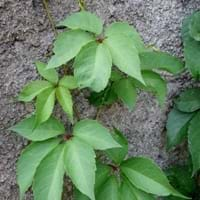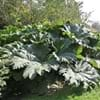Life Span
Perennial
Perennial
Origin
Hybrid origin
Central North America, Eastern Mexico, Eastern North America, Eastern United States, Southeastern Canada
Types
Victoria Rhubarb
Colorado Red Rhubarb
Turkish Rhubarb
Not Available
Number of Varieties
Not Available
Habitat
gardens, Grassland, Humid climates, Tropical regions, Urban areas
Brushlands, Chaparral, open Woodlands, Riverbanks, shaded woods, Stream side
USDA Hardiness Zone
5-8
7-8
AHS Heat Zone
8-3
Not Available
Sunset Zone
2b, 3a, 3b, 4, 5, 6, 7, 14, 15, 16, 17
Not Available
Habit
Clump-Forming
Spreading
Flower Color
Light Pink
Not Available
Flower Color Modifier
Not Available
Bicolor
Fruit Color
Burgundy
Black, Blue
Leaf Color in Spring
Green, Dark Red
Green, Purplish Green
Leaf Color in Summer
Green, Dark Red
Gray Green
Leaf Color in Fall
Green, Dark Red
Blue Green
Leaf Color in Winter
Light Green
Gray Green
Leaf Shape
Compound
Palmate
Plant Season
Spring, Summer, Fall
Late Summer
Sunlight
Full Sun, Partial Sun
Full Shade, Partial shade, Partial Sun
Type of Soil
Clay, Loam
Loam, Sandy
The pH of Soil
Acidic, Neutral, Alkaline
Neutral, Slightly Acidic, Slightly Alkaline
Soil Drainage
Average
Well drained
Bloom Time
Summer, Late Summer
Late Summer, Summer
Tolerances
Drought
Drought
Where to Plant?
Ground
Ground
How to Plant?
Stem Planting
Seedlings
Plant Maintenance
Medium
Low
Watering Requirements
Do Not over Water, Requires regular watering, Use Mulches to help prevent water loss during hot and windy weather, Water Deeply
Needs less watering
In Summer
Lots of watering
Moderate
In Spring
Moderate
Moderate
In Winter
Average Water
Ample Water
Soil pH
Acidic, Neutral, Alkaline
Neutral, Slightly Acidic, Slightly Alkaline
Soil Type
Clay, Loam
Loamy, Moist, Sandy
Soil Drainage Capacity
Average
Well drained
Sun Exposure
Full Sun, Partial Sun
Full Shade, Partial shade, Partial Sun
Pruning
Remove damaged leaves, Remove dead branches, Remove dead leaves
Prune after flowering, Prune for shortening long shoots, Prune in late summer or fall
Fertilizers
All-Purpose Liquid Fertilizer
Fertilize every year
Pests and Diseases
Red blotch
Aphids, Black Vine Weevil, Caterpillars, Flea Beetles, Leaf eating pests, Leaf Hoppers, Scale
Plant Tolerance
Drought
Drought
Flower Petal Number
Not Available
Single
Foliage Texture
Coarse
Fine
Foliage Sheen
Glossy
Matte
Attracts
Not Available
Birds
Allergy
Skin irritation
Abdominal pain, Bloody vomiting, Diarrhea, dilation of pupils, drowsiness, Headache, Nausea, Skin irritation, Sweating, Toxic, Twitching of face, Weak pulse
Aesthetic Uses
Showy Purposes
Showy Purposes, Used for decorating walls, fences, gates, hedges, etc.
Beauty Benefits
Not Available
No Beauty Benefits
Environmental Uses
Air purification
Air purification, Food for animals, Food for birds
Medicinal Uses
Not Available
Antirheumatic, Cough, Diarrhea, Expectorant
Part of Plant Used
Whole plant
Bark, Fruits, Root, Sap
Other Uses
Culinary use, Used as Ornamental plant
Used as Ornamental plant, Used in herbal medicines
Used As Indoor Plant
No
No
Used As Outdoor Plant
Yes
Yes
Garden Design
Feature Plant, Mixed Border
Vine, Wall
Botanical Name
RHEUM 'Ace of Hearts'
Parthenocissus quinquefolia
Common Name
Ace of Hearts Ornamental Rhubarb, Ornamental Rhubarb
Virginia creeper, Victoria creeper, five-leaved ivy, or five-finger
In Hindi
सजावटी प्रकार का फल
वर्जीनिया लता
In German
Ornamental Rhabarber
Selbstkletternde Jungfernrebe, Wilder Wein
In French
rhubarbe ornementale
vigne vierge vraie, vigne vierge à cinq folioles, vigne vierge de Virginie
In Spanish
Ornamental de ruibarbo
Parra Virgen, Viña virgen y Enredadera de Virginia
In Greek
καλλωπιστικά Ραβέντι
αναρριχητικό φυτό της Βιρτζίνια
In Portuguese
ornamental ruibarbo
Virginia Creeper
In Polish
ozdobne Rabarbar
winobluszcz
In Latin
decentius Rhubarb
Virginia creeper
Phylum
Tracheophyta
Magnoliophyta
Class
Not Available
Magnoliopsida
Order
Caryophyllales
Rhamnales
Family
Polygonaceae
Vitaceae
Genus
Rheum
Parthenocissus
Clade
Angiosperms, Core eudicots, Eudicots
Angiosperms, Eudicots, Rosids
Tribe
Not Available
Not Available
Subfamily
Not Available
Not Available
Number of Species
Not Available
Importance of Ornamental Rhubarb and Virginia Creeper
Want to have the most appropriate plant for your garden? You might want to know the importance of Ornamental Rhubarb and Virginia Creeper. Basically, these two plants vary in many aspects. Compare Ornamental Rhubarb and Virginia Creeper as they differ in many characteristics such as their life, care, benefits, facts, etc. Every gardener must at least have the slightest clue about the plants he wants to plant in his garden. Compare their benefits, which differ in many ways like facts and uses. The medicinal use of Ornamental Rhubarb is Not Available whereas of Virginia Creeper is Antirheumatic, Cough, Diarrhea and Expectorant. Ornamental Rhubarb has beauty benefits as follows: Not Available while Virginia Creeper has beauty benefits as follows: Not Available.
Compare Facts of Ornamental Rhubarb vs Virginia Creeper
How to choose the best garden plant for your garden depending upon its facts? Here garden plant comparison will help you to solve this query. Compare the facts of Ornamental Rhubarb vs Virginia Creeper and know which one to choose. As garden plants have benefits and other uses, allergy is also a major drawback of plants for some people. Allergic reactions of Ornamental Rhubarb are Skin irritation whereas of Virginia Creeper have Abdominal pain, Bloody vomiting, Diarrhea, dilation of pupils, drowsiness, Headache, Nausea, Skin irritation, Sweating, Toxic, Twitching of face and Weak pulse respectively. Having a fruit bearing plant in your garden can be a plus point of your garden. Ornamental Rhubarb has showy fruits and Virginia Creeper has no showy fruits. Also Ornamental Rhubarb is not flowering and Virginia Creeper is flowering. You can compare Ornamental Rhubarb and Virginia Creeper facts and facts of other plants too.





